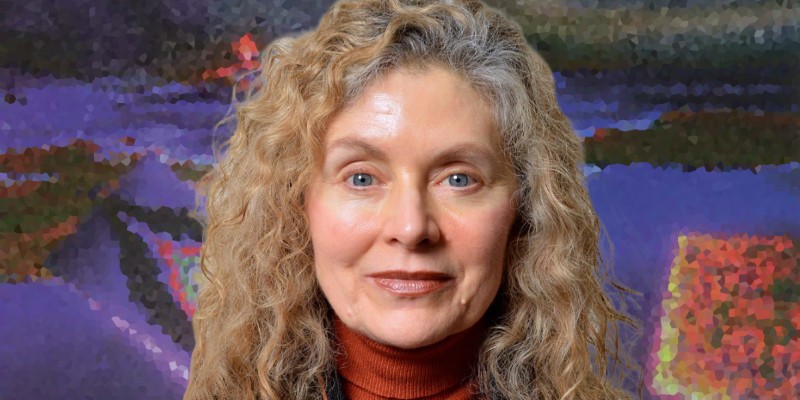It’s the end of an era for the National Center for Supercomputing Applications. Donna Cox, Director of the Advanced Visualization Lab, is retiring after working with the NCSA since it’s inception in 1985. I spoke with Cox last week to hear her amazing story and reflections on her time as an artist and scientist, who in numerous ways crafted her own innovative career.
Cox sees her story as truly one of rags to riches, raised by a single mother and grandmother in Oklahoma in the fifties.
“My mother and my grandmother were widowed and raising kids…working day shifts and night shifts long before there was daycare or even kindergarten…It is really a story of women.”
She describes a museum in Ponca City, not far from her hometown of Enid, dedicated to the story of pioneer woman, and home to the Pioneer Woman statue, famously commissioned by a wealthy Oklahoman politician in 1926 through a sculpture design contest. Says Cox, “The winner is a woman with her kid, dragging her kid along…Even as a child I would go over there and I’d see these strong women, with their kids, pioneering.” She says coming out of an environment with these examples, contrasted with the landscape of a part of the country with a brutal history of treatment of indigineous people and discrimination against Black people, informed her career path, with an awareness “that women can play a major key role and to be quite aware as issues around inclusivity and diversity.”
She explores this in a book she co-edited, New Media Futures: The Rise of Women in the Digital Arts, which profiles women “pioneers” in the areas of art and technology. Cox herself is one of these pioneers. A natural artist, who began drawing at a young age, and was exhibiting her drawings and paintings even before she went to college. “But my big driver of curiosity was the sciences. I was very interested in biology, and looking and studying nature and was fascinated with things like psychology…I was really fascinated with both sides of this study of nature — which was the foundation for the scientific method — and the study of nature by a scientist and a study of nature by an artist….I always was a believer, even an art school, that it was really important to connect the eye and the hand to what people see. And that is a good foundation for doing computer graphics.”
Cox came to the University of Illinois in the eighties as a professor in Art + Design, but quickly established herself at the brand new supercomputing center. Having trained herself in programming and digital art, she convinced the founding director, Larry Smarr, that artists should be involved in supercomputing. She’d already conceived of the concept of Renaissance Teams for collaboration between artists and scientists. A Renaissance Team is “an interdisciplinary group of people who come together to solve big problems.” It hearkens back to the Enlightenment, when artists and scientists collaborated in disciplines such as botany and anatomy. For NCSA, it would be a way for artists and scientists to solve digital visualization problems, and it has been realized through Cox’s Advanced Visualization Lab.
Having been at NCSA since the beginning — she says she was at the right place at the right time — Cox was present for so many technological developments. For her, the sweet spot was 1989-1990, as they began to work on visualizing the internet.
“I mean that was just an exciting time. The network was being born, the browser was being born, and you knew that things were never going to be the same…NCSA was like the epicenter of new technologies and we were at the epicenter of visualizing what was happening.”
Cox has an impressive list of accomplishments — The first Michael Akin Chair at the University of Illinois, published author, recipient of countless awards and accolades — but she does have a few things she’s especially proud of.
I’m very proud of the Renaissance Team, Advanced Visualization Lab, because we have for many, many years now, put into action the idea of good collaboration to solve problems. And I’m also very proud of the New Media Futures book, because a lot of history is overlooked, and a lot of women are overlooked in history and technology. So I would say those two things. That I started my career around teamwork and the importance of being able to collaborate. I taught it in my classrooms, and we’ve lived it. Even the book itself was a collaboration between co-editors and the women involved. It’s the people. It’s not the technology. We can talk about great visualization or computer graphics or emerging technologies, but what really is special here is the people that make it all happen.
Cox is looking forward to reconnecting with friends, returning to making art, and maybe sneaking in a few shows at Krannert that she’s never had time to attend. She’s also leaving the door open for professional work; continuing to support women and the convergence of art and science, and advocating for collaboration.
For an in-depth look at Cox’s life and career, spend some time digging into this profile by Sophie Bui at NCSA, or hear from Cox herself in this retrospective created for SIGGRAPH.








